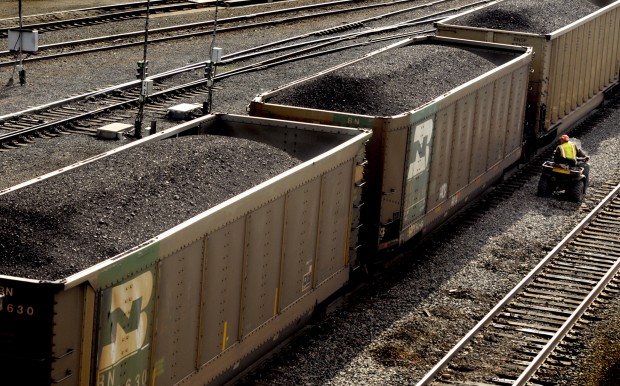Here, the New York Times weighs in on the ongoing problems at the University of Montana.
The (Grizzly football) team … is now at the center of a scandal in which campus authorities and local law enforcement have been accused of doing too little to respond to claims of sexual assault.
Now, back to this week’s Council meeting. (Sorry about the thousand fonts. We’re going to have to live with that problem in this post.)

During Monday night’s Missoula City Council meeting, local electeds approved Councilor Dave Strohmaier’s resolution calling on the U.S. Army Corps of Engineers to conduct a full blown study on the impacts locally and in other communities of the proposed coal export terminals in Oregon and Washington.
Montana Rail Link sent a letter to Mayor John Engen and the council opposing the resolution. Councilman Jason Wiener, who provided the letter, said at the meeting that the rail company noted it had issues with conclusions the council drew in its resolution.
“They did not highlight any of those conclusions,” Wiener said. “They did not offer any alternative set of facts.”
Instead, the letter, from president Tom Walsh, discussed jobs, an approach Wiener described as “a really disappointing bit of spin.”
Councilor Adam Hertz, though, who voted against the resolution, reminded members of the public of the figures in the Montana Rail Link letter.
- MRL employs 906 people from Huntley, Mont., to Sandpoint, Ida.
- The average wage is $67,000.
- An increase in five more loaded trains per day would bring employment up by nearly 250 jobs and $20 million in payroll.
“Given the important role MRL will play in the future shipment of coal and other products through Montana, it’s critical that we work together to address the issues raised in the resolution being considered by the Missoula City Council,” reads the letter.
But Councilwoman Cynthia Wolken eschewed the argument pitting a strong economy against a clean environment.
“I think that we’re smarter than that. We have increasingly better technologies, and I think the Berkeley Pit had a lot of good paying jobs as well,” Wolken said, to laughter in the audience.
Kandi Matthew-Jenkins, who lives on the Westside and hears the trains every night, said she’s all for environmental impact studies. But she doesn’t want to drive businesses out of Missoula. Plus, she doesn’t want Missoula to meddle.
“What I’m against is we are intruding on two different states,” Matthew-Jenkins said.
Or perhaps, said Janet McMillan, we are not doing enough to protect rural communities. McMillan lives in the county and said many crossings run through pasture.
“All these trains going back and forth pose considerable risk to livestock and to people who are trying to get back and forth on their farm,” she said.
Lowell Chandler, who lives on the Northside and once showed up to a council meeting with his hands blackened from a railing outside his home, said sometimes when he breathes outside, he can literally taste diesel.
Here are the prepared statements from Amy Haynes, a physician who spoke Monday about the health hazards of increases in coal train traffic.
“It is a fact that putting that much particulate from coal into our airshed will dramatically increase the diagnoses of asthma, pneumonia, lung and sinus infection, allergies, emphysema, (chronic obstructive pulmonary disease) and cancer – lung, esophageal and stomach – and cardiovascular diseases as well,” said Amy Haynes, a Missoula physician who offered prepared remarks at a Missoula City Council meeting. “We know this. Medical research supports this as a fact.”
Here also is a letter from the Montana Conservation Voters, which Claudia Narcisco handed out at the meeting Monday. If all the ports on the West Coast get built, it’s bad news for Missoula and Montana, according to the letter.
“… Missoula could experience up to 60 additional trains each day passing through the railyard and cutting off at-grade crossings, such as the one (at) Greenough Street. This will result in eight additional hours of train traffic each day, approximately four times the current amount of train traffic we receive.”
In an earlier interview, Montana Rail Link president Tom Walsh told the Missoulian the company does not have the capacity to handle another 60 trains a day, partly because of two difficult mountain passes.
But even if more trains roll through, Montana Rail Link plans to keep the air under federal pollution limits. In the letter about the resolution, Walsh says “… should train volumes increase to the levels anticipated, we fully expect to remain in compliance with all air quality regulations.”
– Keila Szpaller




















